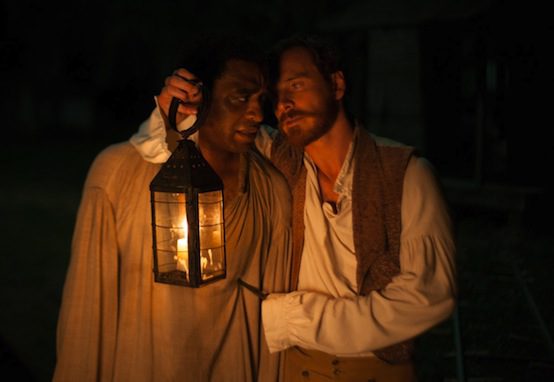Good Film Violence, Bad Film Violence

Both films are very good. Both films are depictions of real people in history. Both films are full not just of violence but violence that must be depicted because it serves the central point. And both films deal profoundly with the effects of human sinfulness.
That’s not how professional critics saw it. Slave, which has had poor box office, got extremely high critical remarks, while Passion was lowballed by reviewers. But as Mollie documents, Slave was widely praised by critics for its unflinching depiction of slavery’s violence, while Passion was vehemently denounced by the same publications — and sometimes the same critics — for its unflinching depiction of the murder of Jesus. For example:
Detroit News (same critic)
Passion: A filmed bloodletting like no other on record, essentially a terribly graphic two-hour torture sequence. (Tom Long)
Slave: “12 Years a Slave” lays out an institution so twisted and wrong that its honest portrayal has been avoided for centuries. Yes, it’s dark and brutal. It needs to be. (Tom Long)
She has many more like this. How to account for the discrepancy? My guess is that professional critics were strongly predisposed to dislike Mel Gibson’s film, and seized on anything they could to denounce it. If you recall, prior to its release, there was a lot of media commentary fearing that the violence would inspire anti-Semitic hate crimes (it did not). Plus, to have opened oneself up to the violence depicted in Passion is perhaps to have opened oneself up to sympathy with the historical Jesus, and perhaps to a more nuanced view of his contemporary followers. Can’t have that. These critics, I would say, are ideologically predisposed against Christianity, and that’s the lens with which they viewed the Gibson film.
Meanwhile, the violence 12 Years A Slave served to confirm what professional critics already think about slavery. A viewer who comes into that film ideologically predisposed towards Old South — one of these so-called Southern nationalist types — would probably have thought the violence overdone and manipulative. Their prior convictions would have colored how they saw the film.
This is normal. No film viewer, professional or amateur, sees a film through neutral eyes. We take all our baggage into a film with us. Still, it’s striking to see how the same storytelling device — graphic violence, viscerally depicted — was either praised or condemned based not on visual content, but on the nature of the story the violence helped tell. Mollie Hemingway notes that many of these critics said that the violent depiction of Jesus’s death was a contradiction to the love-your-neighbor message of Christianity — a highly sanitized and denatured version of the faith:
Let’s revisit the reviews of The Boston Globe’s Ty Burr. Burr thought the violence in “Passion” to be “medieval,” “brutal almost beyond the powers of description,” “more obsessed with capturing every holy drop of martyr’s blood and sacred gobbet of flesh than with any message of Christian love.” But with “Slave,” he found the story of “this country’s original sin,” a film that asked viewers to “confront the worst of what humanity can do to itself.” He thought “Slave” forced viewers to really think about that sin and how foundational it is to our country’s foundation.
Isn’t that fascinating?
Yes, it is. The passion of the Christ — the historical event, not the film — is understood by Christians to be precisely a revelation of “the worst of what humanity can do to itself.” The opening frames of the Gibson film highlight the well-known quote from Isaiah: “By his stripes we are healed.” This tells the viewer that what he is about to witness is what the incarnate God suffered for our freedom. This is basic Christianity. Moreover, Christians believe that in a real spiritual sense, the Jewish mob and the Roman executioners acted on behalf of all of us. Look and see, the Gibson film says, what your sins did to Him. Again, this is basic Christianity. You don’t have to accept it as true, but there is no way honestly to separate the origins of Christianity from the degradation, violence, and death inflicted on Jesus. To think that Christianity is a religion in which a gentle Palestinian Jewish hippie wanted to buy the world a Coke and furnish it with love is as much of an ideological distortion as depicting slave culture as one in which black folks lived contentedly with Massa on the old plantation. What do these film critics think happened in a Roman-era crucifixion, anyway? It wasn’t beanbag — and its violence is inextricably part of the theological meaning of the Crucifixion.
It is possible for the filmed depiction of violence, however historically accurate, to overwhelm the storytelling. For me, this happened in Gibson’s film We Were Soldiers (it starred Gibson, but was directed by Randall Wallace). But that’s not what Hemingway is talking about here.
Why would so many critics decry the onscreen violence in The Passion as exploitative and off-putting, but praise it in 12 Years as painful to watch, but necessary to tell the story? Your theory?
Subscribe for as little as $5/mo to start commenting on Rod’s blog.